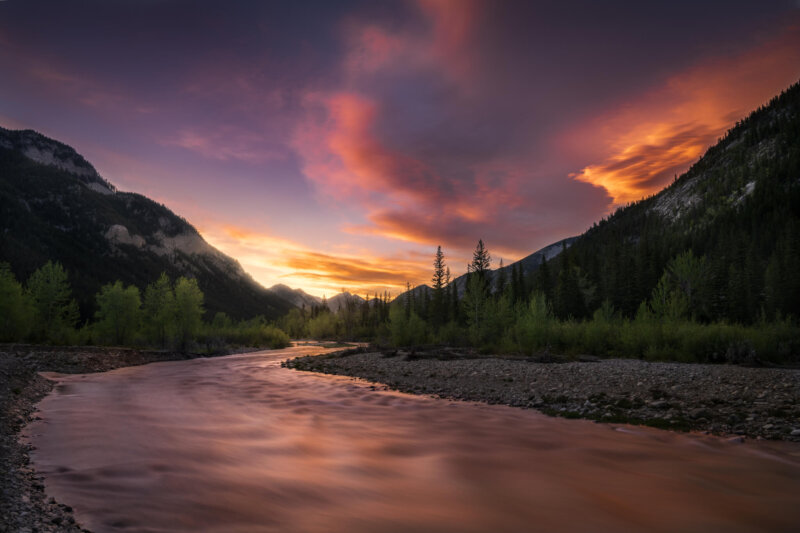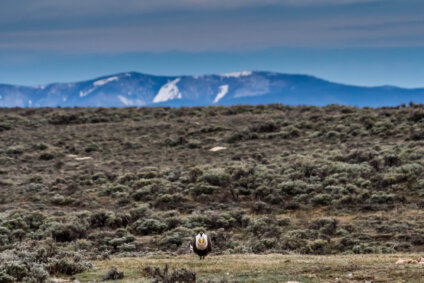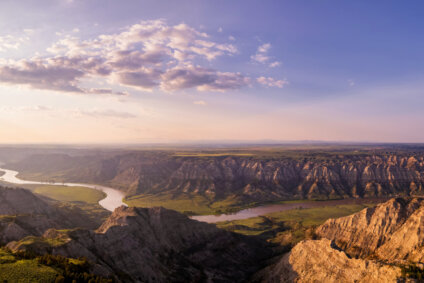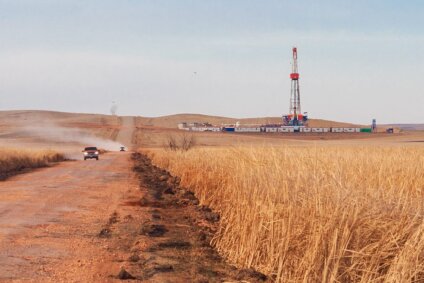The Numbers Are In: Montanans’ Support for Public Lands Continues to Grow
UM survey shows Montanans across the political spectrum care about recreation access and conserving wild places.

Earlier this week, the University of Montana released its biannual Voter Survey on Public Lands. Year after year, the results of this survey have highlighted what’s been evident for years: a massive (and growing) majority of Montanans across the political and geographic spectrum care deeply about conserving our wild public lands.
This year is no different. This year’s survey shows support for public lands conservation and expanding public access to Montana’s wild places is at an all-time high.
Commissioned by the University of Montana’s Crown of the Continent and Greater Yellowstone Initiative and conducted by a group of bipartisan pollsters, the survey asked a randomized sample of 500 registered voters across Montana what they thought about public lands issues. The questions ranged from the general, like how population growth is impacting our public lands, to specifics like whether those surveyed support initiatives like the Blackfoot Clearwater Stewardship Act and Lincoln Prosperity Proposal.
The results demonstrated an overwhelming level of support for public lands protections, particularly for many of our key programs and initiatives. It’s clear evidence that Montanans are united in wanting to protect our public lands, and we’re committed to leading the effort to protect our irreplaceable wildlands and the wildlife, clean water, solitude, and strong communities they support.
Help us protect what makes Montana special
Runaway development, climate change, and loss of connectivity are chipping away at precious wildlife habitat. Join Wild Montana and be a force for wild public lands and waters.

The Highlights
Blackfoot Clearwater Stewardship Act
A whopping 85% of voters surveyed said they support the Blackfoot Clearwater Stewardship Act, which will add nearly 80,000 acres to the Bob Marshall, Scapegoat, and Mission Mountains Wilderness Areas and safeguard the four most crucial tributaries of the storied Blackfoot River, helping sustain the health of wildlife, native trout populations, and the river itself.
Support for the BCSA continues to climb. In 2018, it was supported by 73% of survey respondents, while in 2020 the number climbed to 75%. The continued growth of support for this historic act, championed by Sen. Jon Tester, is yet more evidence that our entire delegation needs to abide by the wishes of their constituents and throw their full support behind this historic piece of legislation.
Contact Rep. Ryan Zinke today and ask him to support the BCSA.
Lincoln Prosperity Proposal
In its third year being included in the survey, the Lincoln Prosperity Proposal was supported by 76% of voters, a remarkable level of support for a relatively new initiative. That’s a 5-point increase from the previous survey. The proposal would create the 40,000-acre Nevada Mountain Wilderness – Montana’s first new wilderness area in nearly 40 years – add 16,000 acres to the Scapegoat Wilderness, and protect an additional 63,000 acres near the town of Lincoln. It’s the result of years of hard work by Wild Montana and our partners to develop a vision for protecting public lands near Lincoln and along the Continental Divide.
Wilderness study areas
According to the survey, 75% of Montana voters want to continue protecting wilderness study areas, conserving them for recreation and wildlife habitat. Just 9% of voters want to eliminate WSA protections. Despite this, Sen. Daines has (again) introduced anti-public lands legislation that, if passed, will strip protections from over 100,000 acres of wilderness study areas without any public input. Residents across the state have made it clear that the future of WSAs should be determined by locally driven collaborative processes, rather than top-down legislation designed to strip protection from some of Montana’s wildest places.
Mining at the headwaters of the Smith River
New this year, the survey asked Montana voters if they support the U.S. Forest Service having a public process on allowing new hardrock mining at the headwaters of the Smith River. 73% of Montanans said they support a public process.
Recently, there has been a push for industrial-scale mining on private and public lands in the Smith River drainage. While we understand the necessity of mining for modern society, the serious environmental damage that often results from mining means it isn’t appropriate everywhere. Because of the Smith River’s unparalleled natural attributes and cultural importance, mining on public lands within the Smith watershed simply is not appropriate. We’re asking the Forest Service to withdraw the public lands at the headwaters of the Smith from having any future mining claims.
BLM Public Lands Rule
According to the survey, 7 in 10 Montana voters are supportive of the Bureau of Land Management’s Public Lands Rule, giving conservation equal footing with extractive uses in management decisions.
Since the mid-20th century, the BLM has managed our public lands with a focus on oil and gas drilling, grazing, mining, and other extractive uses. As a result, the agency has neglected a host of other values and uses included in its multiple-use mandate, including land conservation, water quality, and cultural preservation, not to mention hiking, hunting, fishing, wildlife viewing, and other forms of outdoor recreation that underpin Montana’s quality of life and contribute $2.4 billion in added value to the state’s economy. On April 18, the BLM released the final Public Lands Rule to guide the balanced management of public lands, part of a sweeping suite of efforts by the BLM and Department of Interior that will usher in a new era of public land and resource management that considers landscape health in every aspect of decision-making and allows the agency to be more nimble in the face of climate change.
The Takeaway
The results of this survey not only shed light on what Montanans revere, but reflect the hard work that Wild Montana and our partners have put into educating our great state about the value of protecting Montana’s wild public lands and waters. We’ll continue to push forward common-sense policy benefiting our wild places and ensure Montanans have a hand in shaping a brighter future for our wild public lands and waters.
Stay Connected
"(Required)" indicates required fields


